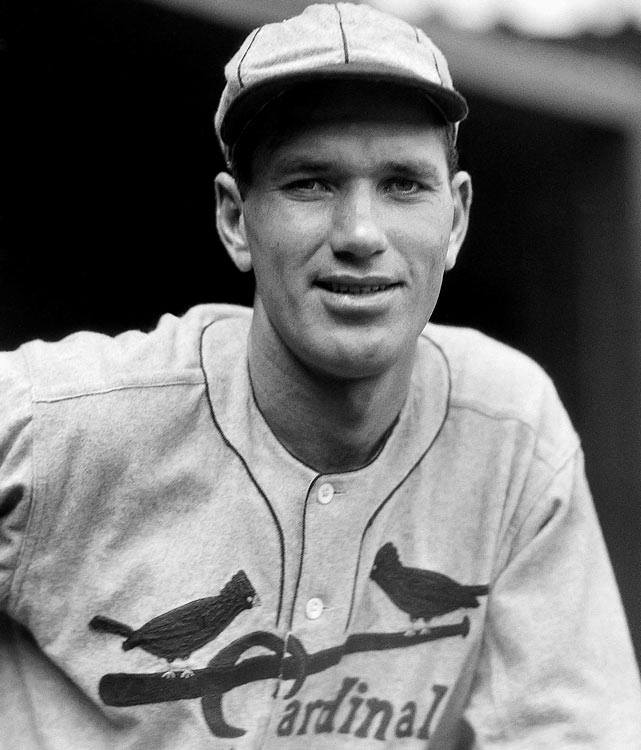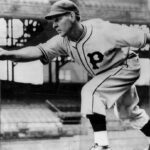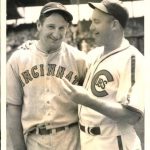Gus Suhr Stats & Facts
Gus Suhr
Position: First Baseman
Bats: Left • Throws: Right
6-0, 180lb (183cm, 81kg)
Born: January 3, 1906 in San Francisco, CA us
Died: January 15, 2004 in Scottsdale, AZ
Buried: Olivet Memorial Park, Colma, CA
High School: Polytechnic HS (San Francisco, CA)
Debut: April 15, 1930 (7,047th in major league history)
vs. CIN 5 AB, 2 H, 0 HR, 0 RBI, 0 SB
Last Game: May 12, 1940
vs. BRO 1 AB, 0 H, 0 HR, 0 RBI, 0 SB
Full Name: August Richard Suhr
View Player Info from the B-R Bullpen
View Player Bio from the SABR BioProject
Nine Other Players Who Debuted in 1930
Luke Appling
Joe Kuhel
Pinky Higgins
Ben Chapman
Hank Greenberg
Lon Warneke
Tommy Bridges
Lefty Gomez
Dizzy Dean
Notable Events and Chronology for Gus Suhr Career
Biography
When fans today discuss their all-time Pirate teams, they usually place Willie Stargell at first. This is done in order that one might pick from the very talented core of outfielders the Pirates have had such as Ralph Kiner, Barry Bonds, or the Waners to fill out their outfield. One would have to go back to the 1890s and Jake Beckley to find another Cooperstown enshrinee besides Stargell who played first base and spent a significant portion of his career in Pittsburgh. Actually, the question of who was the greatest Pirate first baseman becomes more difficult if one places Stargell in the outfield, and as Willie played more games in left than at first, it seems logical to do so and Beckley actually had his best years with other organizations. One of the best candidates to be called the Pirates All-Time first baseman then is Gus Suhr, who provided a clutch bat and excellent defense for the team throughout the 1930s.
Suhr still holds the team record for games played at first (1,339) and as Kevin Young recently just topped 900 for his Pirate career, it appears Suhr’s mark will be safe for some time. His 822 consecutive games played is another team record and was the National League-high when he achieved it. Suhr knocked in 789 runs in his 9 ½ years in Pittsburgh, more than such luminaries as Arky Vaughan, Dave Parker or Barry Bonds and his 276 doubles tie him for tenth on the all-time Pirate list.
A native of California, Suhr had an outstanding year in the Pacific Coast League in 1929, batting .381 with 51 homers, 175 rbi’s, and a league-leading 196 runs. Already showing the durability which would be his trademark, Gus played every inning of the PCL’s grueling 202 game schedule. Although Pittsburgh was 3,000 miles away, Suhr didn’t mind leaving San Francisco when the Pirates purchased him from the Seals. “Going to the big leagues was an honor,” Suhr remembered. “My family visited by train every year in May or June and I always went back to San Francisco after the season.”
Barney Dreyfuss hoped the team’s new first baseman would be a major home run threat and Dreyfuss even delayed plans to erect a screen in rightfield at Forbes Field hoping Suhr would be able to take advantage of the rightfield wall being just 300 feet away down the line. However, the team soon recognized Gus’s power was to the alleys and Dreyfuss went ahead with his initial plan as the owner felt the Pirates were being hurt by cheap home runs by lefthanded pull hitters from other clubs. Suhr hit a respectable .286 and drove in 107 runs with 17 homers as a rookie, usually hitting somewhere in the middle of a Pirate lineup which featured the Waners, Pie Traynor, Dick Bartell, and George Grantham. He was also impressed in the field, having worked hard to become an excellent defensive first baseman, something the scouting reports from the PCL had not indicated. Suhr could run as well and as a rookie was in double figures in home runs, doubles, and triples for the first of six times in his career.
“I felt good about my rookie year,” Suhr wrote recently, “My first day up I got two hits off Red Lucas of the Reds, who later became a teammate.” His patience at the plate also impressed rivals as he drew 80 walks as a freshman.
1931 was a bad year for the young slugger. He got off to a slow start at the plate, then injured his knee on a pick-off play. He batted only .211 and saw less playing time as Jewel Ens, who Suhr recalled as a good manager, attempted to find a formula to wake the Pirates out of a season-long slump.
George Gibson took over as manager in 1932. In spring training he had Suhr adjust his stance and Gus had a much better season, hitting .263 with 81 rbi’s. The Pirates, surprise contenders in what was to be a rebuilding year, had difficulty with lefthanders and although accounts of that year indicate Suhr did as well, his excellent defense made it impossible for Gibson, who was going with a rookie double-play combination of Vaughan and Tony Piet, to take the first sacker out of the lineup. Suhr posted similar numbers in 1933, but in 1934 improved to .283 with a career-high 36 doubles while adding 13 home runs and 103 rbi’s. Traynor named Suhr to succeed him as team captain when Pie was named manager that year, noting Suhr was a player who kept himself in condition at all times.
Suhr’s numbers continued to show consistency in 1935 and he was credited with breaking Glass Arm Eddie Brown’s National League record for consecutive games played of 618 on September 19. However, after the season, the record was temporarily taken away from him when it was discovered Steve Brodie of the old Baltimore Orioles had played in 722 consecutive games in the 1890s. Suhr, however, passed him in 1936. “The record was met with little fanfare,” Suhr recalled. “There was more fanfare when Stan Musial broke dad’s record,” Suhr’s son, Gus, Jr., added.
1936 was also Suhr’s finest year. He set career highs in rbi’s (118), runs (111), hits (182), batting (.312), and walks (95). Topping it off, he also led the league in fielding and was named to the All-Star team.
Suhr knocked in 97 more runs in 1937 but ended his consecutive games played streak when he left the team to honor his mother who had unexpectedly passed away. Missing a few more games in 1938, Suhr’s rbi total fell to 64, but he still helped the Pirates greatly in their pennant race by hitting .294 and scoring 82 runs. In a key game against the Giants that year, Gus contributed a ninth-inning hit to win a game with two outs and the Pittsburgh fans threw their hats on the field in appreciation. Like most of his teammates though, Suhr remembers 1938 as disappointing due to Gabby Hartnett’s homer in the gloamin’.
When the effects of their pennant collapse lingered into 1939, the Pirates started to look towards younger players and while Suhr was still a fine talent, traded for Elbie Fletcher. Ten years younger than Suhr, Fletcher replaced him as the Pirate’s first baseman and the team traded Suhr to the Phillies for pitcher Max Butcher a few weeks later. “I was saddened to be traded and I missed the team and my teammates,” the ex-Pirate wrote. Gus finished the year at .303, but his major league career ended when he got off to a slow start the next year.
Suhr returned to the Pacific Coast League where he played several more seasons, eventually being reunited with Vaughan in the late 1940s. Suhr had maintained a close friendship with former Pirate Woody Jensen until the outfielder’s passing in 2001. A few years ago before he passed away in 2004 at the age of 98, Suhr became one of the most popular and well-respected figures ever to appear at the team’s annual Piratefest as he answered questions and signed autographs for fans. He shared with the audience that Wild Bill Hallahan had been particularly tough for him to hit and corresponded that Dizzy Dean and Carl Hubbell were also very difficult to solve.
@ET-DC@eyJkeW5hbWljIjp0cnVlLCJjb250ZW50IjoicG9zdF90YWdzIiwic2V0dGluZ3MiOnsiYmVmb3JlIjoiTGVhcm4gTW9yZSBhYm91dCB0aGUgdGVhbXMsIHBsYXllcnMsIGJhbGwgcGFya3MgYW5kIGV2ZW50cyB0aGF0IGhhcHBlbmVkIG9uIHRoaXMgZGF0ZSBpbiBoaXN0b3J5IC0gLSAtIC0gLSAtIC0gIiwiYWZ0ZXIiOiIiLCJsaW5rX3RvX3Rlcm1fcGFnZSI6Im9uIiwic2VwYXJhdG9yIjoiIHwgIiwiY2F0ZWdvcnlfdHlwZSI6InBvc3RfdGFnIn19@
Factoids, Quotes, Milestones and Odd Facts
Other Resources & Links





